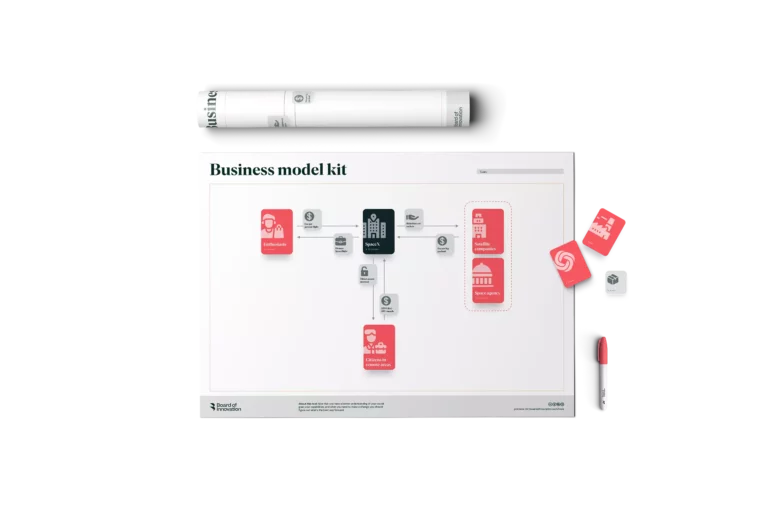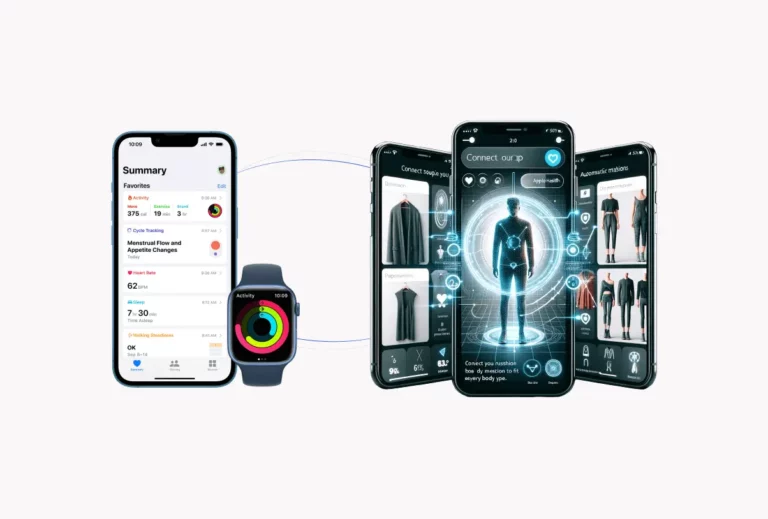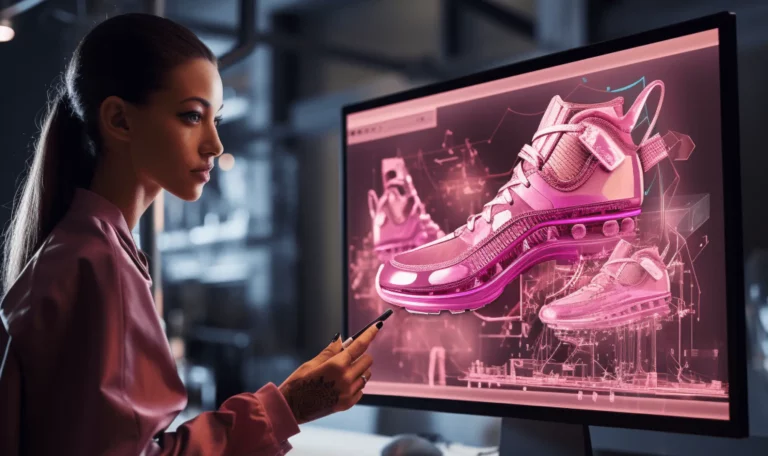Why read this?
This blog post will help you identify sustainable new revenue streams for your business, challenge revenue models you’ve already developed, and come up with alternative money-making tactics.
Earning income, producing profits, or generating higher returns on investment is a challenge best solved by working smart, not hard. If you thought money was what makes the world go round, you were wrong: it’s revenue models. Let’s get cracking on which one is the right fit for you.
Explore new ways to monetize your business
One of the most common questions we get at Board of Innovation is, ‘How can my company generate new revenue?’ Armed with the right knowledge, anyone can unlock new revenue models that have a direct, substantial impact on their bottom line. It starts with having the right toolkit.
We identified 4 categories within the 26 revenue strategies: free for the user, third-party pays the bills, value proposition, and pricing tactic. You’ll always need a combination of two:
- If it’s free for the user (1), you’ll need a third party who pays the bills (2).
- If your business models revolves mostly around a key element of value creation (3) then you’ll need a pricing tactic to capture value (4).
One of the most common questions we get at Board of Innovation is, ‘How can my company generate new revenue?’ Armed with the right knowledge, anyone can unlock new revenue models that have a direct, substantial impact on their bottom line. It starts with having the right toolkit.
We identified 4 categories within the 26 revenue strategies: free for the user, third-party pays the bills, value proposition, and pricing tactic. You’ll always need a combination of two:
- If it’s free for the user (1), you’ll need a third party who pays the bills (2).
- If your business models revolves mostly around a key element of value creation (3) then you’ll need a pricing tactic to capture value (4).
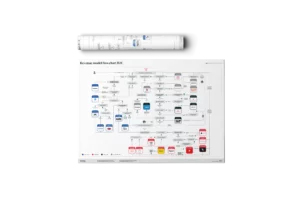
Pick the right revenue model now
Download this easy-to-use poster to find the right B2C revenue model for your business idea.
Revenue models based on a value proposition
1. Privacy/anonymity
When people don’t want others to be able to see how they use a free online platform or service, they might pay for added privacy.
Where we’d start our pricing strategy:
Set some pricing options & see which ones get traction with feedback data.
Who uses this revenue model?
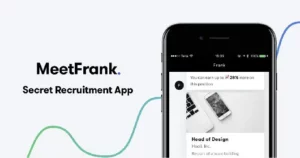
MeetFrank
Ever wanted to find out the salary package before you apply for a job? You can, with MeetFrank. This ‘secret job market’ anonymously matches workers with roles that meet their conditions. Once you’re certain the job offer is right, you can reveal your identity to the company and start chatting.
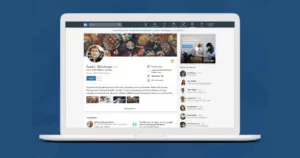
LinkedIn Premium
LinkedIn is a business and employment social networking site. It’s a great place to find potential employees or employers, but unless you set your profile to private, you will be able to see who’s looking at your profile, and they’ll know when you look at theirs. For the privilege of browsing anonymously, users and companies can pay for LinkedIn Premium.
2. Loss aversion
Also known as locking-in customers, the loss aversion technique is a favourite of drug dealers and telcos alike! How does it work? By giving their products away for free (or selling them cheaply), they make sure that changing to a different product/service incurs lots of hassle (in money, time or effort).
Where we’d start our pricing strategy:
Costs related to the risks of letting go of the old product/service + cost of getting familiar with the new solution.
Who uses this revenue model?
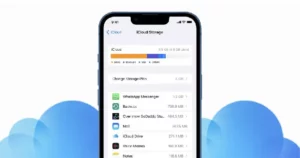
iCloud
Apple’s data storage service, iCloud – which comes standard with Apple devices – is free at first, but once users compile more than 5GB of data, they need to pay. While other, free services are available, it can be a hassle to switch. Who knows what could be lost when switching services? Argh, might as well just pay.
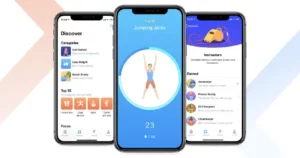
Seven
Seven is a fitness app for people who want to work out each day for 7 months. If you miss a day, you lose a ‘heart.’ Once you lose your 3 ‘hearts,’ you have to start again from zero which can be a letdown. Of course, extra ‘hearts’ can be bought for little more than €1 per ‘heart.’
3. Vanity/reputation
Allowing your customers to distinguish themselves from other customers can make them feel important (which is a feeling some may be willing to pay for). This technique is often used in gaming.
Where we’d start our pricing strategy:
Pricing interviews to define what value you create and then deduce how much it’s worth to your customer.
Who uses this revenue model?

Fortnite
Fortnite is an online Battle Royale game that sees 100 players fight it out to be the last one left standing. Players can buy great weapons and outfits – or ‘skins’ – to give themselves the best chance of doing the victory dance. The ‘skins’ constantly change. Some are free, some are paid, and some are very rare status symbols.
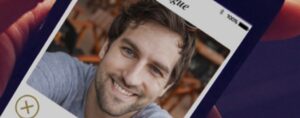
The League
The League is a dating app for people with high standards and little time. It uses Facebook and LinkedIn data to vet prospective partners, allowing users to date according to income and education. Of course, they pay for the privilege.
4. Helping peers/gifts
You know that sense of satisfaction you get when you buy your friends a round of drinks in the pub? Some companies capitalize on it. How? By enabling their consumers to indulge in that mood boost by helping others while using the product, or by giving their friends rewards if they sign up, too!
Where we’d start our pricing strategy:
Work out the average value a new customer generates and the cost of acquiring a new customer.
Who uses this revenue model?

Coinbase
Cryptocurrencies can be confusing for the uninitiated. Coinbase is a user-friendly trading platform that makes it easy to understand. On top of that, they incentivize users to invite others to their platform and share their content (thus expanding their reach/client base) by rewarding them (and their friends) with cryptocurrencies in return! Doesn’t that make you want to share it?

Broodfonds
Freelancing can be risky business, but Broodfonds (Dutch for ‘bread fund’) takes some of the worry away while connecting users to a community of people in the same boat (or bakery?). Each ‘bread fund’ is a community of 20-50 entrepreneurs who each pay a premium. When a person in the fund is ill for a long time, the funds will be used to help them out. You choose how much you want to contribute, but the more you contribute, the more you get should you fall ill yourself.
5. Exclusivity/limited availability
People pay a premium for the chance to own something that nobody else has.
Where we’d start our pricing strategy:
Set a (very) high price and lower it if you don’t get traction.
Who uses this revenue model?

$18.9 million Bugatti
Bugattis are expensive as it is, but the La Voiture Noire ups the ante. The company will only be making one of them, so while other cars depreciate in value, the exclusivity of this model means it will only go up over time. In that way, it’s more like art than a vehicle.

Wu-Tang Clan
Instead of selling copies to all their fans, Wu-Tang Clan released just one copy of its secret album: “Once Upon a Time in Shaolin”. Musea can rent the album to fans at $40 a time.
6. Convenience/shortcuts
A product/service that’s more convenient or easy to use than existing alternatives is always worth paying for.
Where we’d start our pricing strategy:
Look for extreme users who found a way to solve the underlying problem then determine how much it cost them to do so.
Who uses this revenue model?
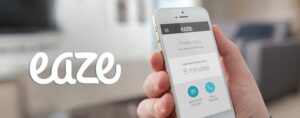
Eaze
Eaze is Uber for weed. Many delivery companies are prohibited from shipping marijuana in the United States. Companies like Eaze are filling the gap. This platform connects users to licensed dispensaries, who will then deliver pot directly. So really, Eaze’s principal offering is the convenience of browsing stores in one place.
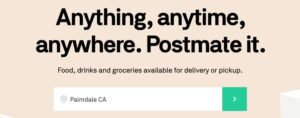
Postmates / TaskRabbit
Companies like Postmates (a logistics company) and TaskRabbit do the tasks that users don’t have time for – or just don’t want to do. Can’t make it to the grocery store or the pizza shop? Order it on Postmates. Need someone to fix your washing machine or to help you move? TaskRabbit will connect you with reliable people in your neighborhood.
7. Mystery/surprises
Giving people a reason to believe that they might win a lottery, for instance, creates a good customer experience. Not knowing what’s coming can often be exciting!
Where we’d start our pricing strategy:
Make an estimation of how much it would cost you to deliver this solution at scale (cost-based pricing) and run experiments to determine the willingness to pay and price elasticity at different mark-ups.
Who uses this revenue model?

Zalon by Zalando
Do you find shopping tedious? Do you end up wearing the same thing all the time? Personal shopping services like Zalon by Zalando take the pain away. They’ll match you with a stylist who will pick complete outfits for you. The completed look will be delivered to your door and you can return what you don’t like. The service is free, but you pay for the clothes you keep.

srprs.me
Some people love surprises, and they’ll pay for the experience. Srprs.me capitalizes on that. If you tell them your preferences (the dates, where you’ve already been, what kind of weather you like), they will plan a holiday for you! You won’t find out where you’re going (including the country) until you get to the airport.
Revenue models where a third party pays the bills
8. Advertising
The user becomes the product – companies pay to reach your customers. The desired result is to drive consumer behavior with respect to a commercial offering.
Where we’d start our pricing strategy:
Make an estimation of how much it would cost you to deliver this solution at scale (cost-based pricing) and run experiments to determine the willingness to pay and price elasticity at different mark-ups.
Who uses this revenue model?
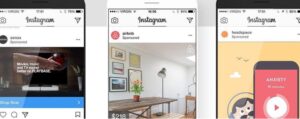
How does Instagram make money? Well, as Mark Zuckerberg (CEO of its parent company, Facebook) famously quipped while testifying before the U.S. Congress: “Senator… we run ads.” Indeed, while the service is free for users, advertisers pay for the privilege of reaching its customers.

Metro
Metro is free around the world. Their goal? To reach as much commuters as possible. The more eyeballs they keep rolling, the more companies will pay for ads in these newspapers.
9. Marketplace
A marketplace brings together supply and demand through a platform or broker. The one gaining the most value out of the transaction is the one who pays the marketplace commission (if not both).
Who uses this revenue model?

TaoBao
Taobao is a Chinese online shopping website, headquartered in Hangzhou, and owned by Alibaba. It’s the world’s biggest e-commerce website. Much larger than eBay, this open marketplace connects sellers to customers and takes a small cut from sales.

Getaround
Getaround is an online car sharing or peer-to-peer carsharing service that allows drivers to rent cars from private car owners, and owners to rent out their cars for payment.
10. Data selling
Selling customer data is a lucrative business for many purposes: targeted advertising, medical research, personalized services, etc. Being transparent is one of the keys to success!
Who uses this revenue model?
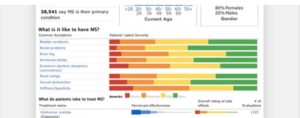
PatientsLikeMe
PatientsLikeMe offers a valuable (and free) P2P service for people searching for the best treatment of their disease. Anonymous data is sold to pharma, so they can improve treatments.
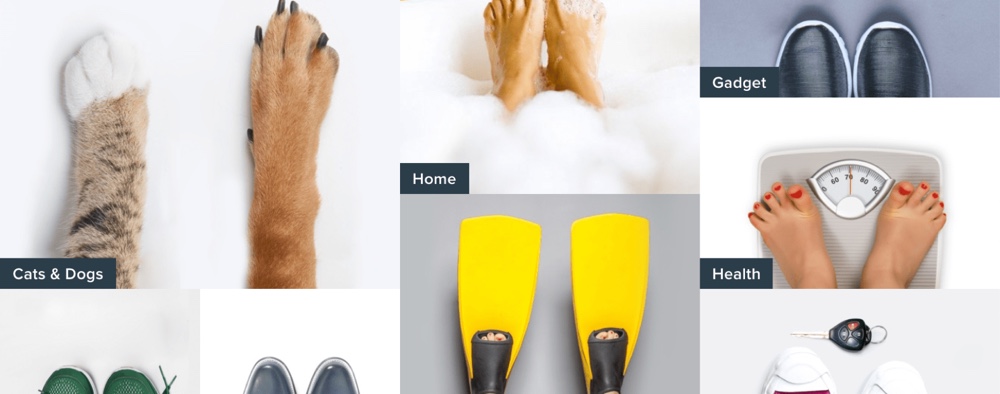
BoughtByMany
BoughtByMany groups customers based on their insurance needs. They have more than 700,000 members, and when enough users with the same needs join a group, BoughtByMe will negotiate with companies to procure a cheaper deal in exchange for access to said group of customers.
11. Affiliate/referral
When referring your customers to another company, you are driving that company’s sales. Depending on the product and program, 5-10% of the product price is a good indicator of the lead or sale fee you’ll receive.
Who uses this revenue model?
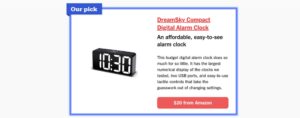
The Wirecutter
These days, it’s hard to trust product reviews. The poster could secretly be getting paid to promote a dodgy product. Wirecutter solves the problem. The company tests and independently reviews products from Amazon. In exchange, they simply ask that you purchase said products using their affiliate link so that they can get paid.
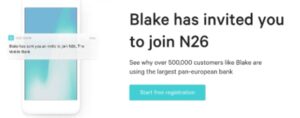
N26
To encourage users to share their product with friends and sign up, banks like N26 will give both the user and the person they refer money for registering an account.
12. Get one, give one
Sometimes you want to target a user segment that simply can’t afford your product in any way. The decision to make another segment pay double has been made for charity: laptops, flash lights, etc.
Who uses this revenue model?
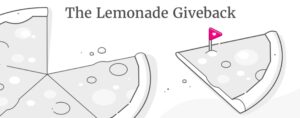
Lemonade
Lemonade is a full-stack insurance company powered by AI and behavioral economics, and driven by social good. After they’ve paid salaries, claims and other fees, they donate the profits from premiums to causes their customers care about. In 2018, they gave back $162,135.
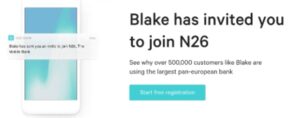
Pampers + Unicef
Pampers is not the cheapest diaper brand on the market, but every year they incentivize users to buy their product by partnering with UNICEF. For each pack sold during their annual “1 Pack = 1 Vaccine” campaign, Pampers funds the purchase of a life-saving tetanus vaccine to ensure pregnant women and newborns in need are protected. 300 million vaccines have been donated to date and because their target audience (new parents) changes all the time, the campaign still feels fresh after almost 14 years.
Revenue models that are free for the user
13. Non-monetary
here’s no such thing as a free lunch! Apart from direct revenue, companies launch products/services to increase their user base, prestige, contacts, etc.
Who uses this revenue model?

Waze
Waze is a crowdsourced navigation tool that helps users get around town and avoid traffic. The map is free for consumers in exchange for their data. It uses that data to create a carpooling service that demands a transaction fee from its users. This data also improves the Maps application of its parent company Google.

Casper
Casper sells mattresses online. Instead of reselling or discarding returned mattresses, Casper donates returned mattresses to a local charity. If necessary, they go through the wash; then, they get donated to a local religious organization, charity, or upcycled for use in one of their pop-up experiences.
14. Donation
Some companies rely on the generosity of their users. They give people a chance to show them how much they appreciate the offering/service in the form of a gift (€) or tip jar/donation.
Who uses this revenue model?

4ocean
4ocean sells bracelets made from recycled materials. The company uses a portion of the profits to remove one pound of trash from the ocean and coastlines for each bracelet that is sold in an effort to clean up plastic pollution in oceans.

GoFundMe
GoFundMe crowdfunding platform that allows people to raise money for events ranging from life events such as celebrations and graduations to challenging circumstances like accidents and illnesses. The platform is free to use in most countries. Campaign donors may choose to give GoFundMe a voluntary tip during the donation process to support the platform.
15. Pay-what-you-want
Customers choose the price for a product. This works well with high fixed-costs and low variable costs, and when there is a long-term customer relationship (e.g. services like restaurants, museums, or electronic products like music, games, or software)
Who uses this revenue model?
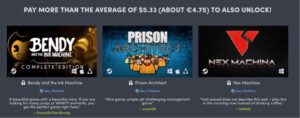
Humble Bundle
Humble Bundle offers game bundles for a price that you choose yourself. When you beat the average price payed by other contributors, you receive extra games. Storybundle is another company that does the same for books.

8K design agency
Offer what you want for their services and they pick the offers they like. Apart from money, value drivers for 8k could be: availability of their designers, big brands for their portfolio, etc.
16. Freemium
Segmenting your user base into free and paid users is called a freemium business model. Paying customers usually have access to superior features and extras.
Who uses this revenue model?

Spotify
Free users of Spotify receive advertisements every 20 minutes, paying users don’t. Paying users are also able to download music so they can listen while they’re offline.

Freeletics
Freeletics is a form of bodyweight training. This means that all you need to do the exercises is your own bodyweight. The app offers free explanation videos of the exercises, but only paying members get a custom training journey and nutrition support.
17. Barter
Receiving products/services you want in return for another good or favor. Most barters are triangle deals.
Who uses this revenue model?

Simbi
Simbi is an online bartering platform. The idea is that everyone has a service that they can offer and Simbi presents them with the opportunity to trade that service for something that they want or need, in exchange for credits. The credits system leaves open the possibility that Simbi could charge users to buy credits if they don’t want to put up a service to swap.
iCarbonX is a healthcare startup that‘s created a patient data platform to collect patient information, and monitor, understand, analyze, and improve the lives of its users through technology. The platform uses AI combined with the patients’ medical history, behavioral, and biological data to create a map of human health based on information collected from patients all over the world. The information collected is then used to learn from diseases, classify conditions, make more accurate diagnoses, and provide better treatments.
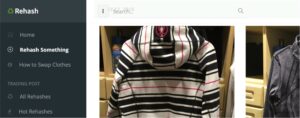
Rehash
Rehashing is a way to swap your clothes with others. Others can see your items and offer you their items in exchange for something you have that they like. Rehash makes money with their “Verified Rehasher” program where users pay a one-time $5 fee to get verified. Once verified they become more trustworthy and have an easier time making trades.
Revenue models based on a pricing tactic
18. Subscription
A subscription is a pricing tactic with which you sell access to a product or service for a certain period of time. The service can be the periodic delivery of a product (newspaper), using a cloud-based software, being able to call assistance, etc.
Who uses this revenue model?
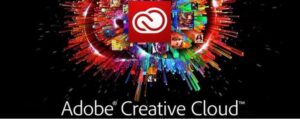
Adobe Creative Cloud
Adobe Creative Suite switched from single purchase for life to a cloud service. You only pay for what you need for the time you need it. According to Adobe it’s cheaper. Disclaimer: They are lying 🙂
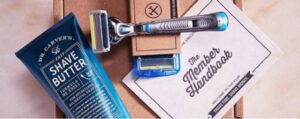
Dollar Shave Club
Every week you receive fresh razor blades in your mailbox for $1/month. That’s convenient! Apart from razor blades, you might find this kind of services for socks, fruit, candy bars, etc.
19. Leasing
Customers receive a physical product for a limited period. Within that timeframe, a product can only be leased to one customer who gets full exclusivity.
Who uses this revenue model?

Rent the Runway
Rent the Runway is a subscription fashion service that enables women to rent unlimited designer clothing. Users can play a monthly subscription fee and have clothing delivered to their door – and picked up when they’re ready.

Casper
Leasing of cars is a service used by all companies worldwide. Leaseplan is one the leading providers of this service.
20. Pay-per-use
This is a results-based pricing tactic: some products are only used a limited amount of times (a car is idle 97% of the time). Paying only for the time you need a product/service creates flexibility and increases the value per use.
Who uses this revenue model?

Bird
Bird is a dockless electric scooter-sharing company that enables you to pick up and drop off shared scooters anywhere. Initially they were pay-per-use (simply scan it in and out and be charged for each ride), but they now also offer monthly subscriptions.
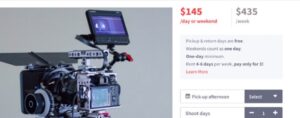
ShareGrid
High-quality photography gear is quite an investment, especially if you only plan to use it once or twice a year. That’s where ShareGrid comes in. They enable you to rent professional photography and film gear from owners within your community.
21. Dynamic pricing
A pricing strategy with highly flexible prices for products or services based on different variables: demand-based, time-based, profile-based, etc.
Who uses this revenue model?
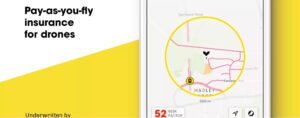
Flock
Flock is an insurtech company building a Big Data-driven risk intelligence platform for drones. Flock tailors a Risk Metric for each user that takes real-time data into account. This means that a user will pay more for insurance when it rains or when they’re flying in rush hour.
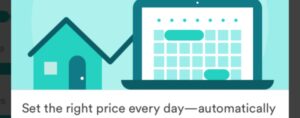
Airbnb
AirBnB offers “Smart Pricing.” Once enabled by the renter, Airbnb will change the rent to match supply and demand in the area. This ensures hosts have the best chance of renting their place out at the best possible price.
22. Flat rate
This is how most products are sold: you pay a one-time fee to own the product and/or receive access to a service for life.
Who uses this revenue model?

Brilliant
Brilliant.org, also known as Brilliant, is a website and associated community that features problems and courses in mathematics, physics, quantitative finance, and computer science. It operates via a freemium business model, but it also offers users a lifetime membership for a one-off payment of $599.99.

Dyson
Forget buying vacuum bags, Dyson sells high quality vacuum cleaners that are completely bag free. This means that, unlike other vacuum brands that sell products that require disposable bags to function; customers only need to pay Dyson once.
23. Upselling
Some customers might have deeper pockets than you think. Always allow them to upgrade or purchase an add-on. The gaming industry does this very well.
Who uses this revenue model?
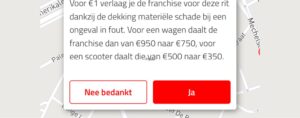
Poppy
Poppy is a mobility-sharing platform environmentally friendly sharing cars and e-scooters. You pay per use for every ride. Just before starting your ride, Poppy asks you if you’d like to lower your the amount you have to pay in case of an accident for just €1.

Tesla
Tesla’s ‘Model 3’ has a modest price tag of €35k. By requesting a longer-range battery, full self-driving capability, or some extra cosmetic options, you will have to pay extra. A Model 3 full option would cost you more than $64k.
24. Pre-sales
This involves offering a product/service/right for sale before it is fully developed. This is mostly used as a means of funding or to receive proof-of-customer interest before launch. This should always be combined with another pricing tactic!
Who uses this revenue model?

The Dash by Bragi
The Dash (by Bragi) are Wireless Smart Headphones launched on Kickstarter. Bragi used a crowdfunding platform for raise a development budget and to receive customer feedback before investing in production facilities.
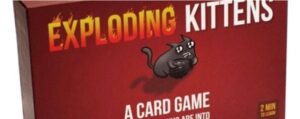
Exploding Kittens
After the massive crowdfunding success of their card game Exploding Kittens (it raised $8.7 million), the owners have continued to fund additional projects on the platform, including Throw Throw Burrito and Bears vs Babies.
25. Fractional ownership
A pricing tactic with highly flexible price mechanics for products or services based on different variables: time, demand, profile, performance, etc.
Who uses this revenue model?

FlexJet
Want to own a jet? Now you can! Well, part of one. FlexJet offers fractional ownership aircraft. The number of hours you can fly it with it a year depends on how much of the jet you own.

Elite Destination Homes
Always nice to go on holiday to your own villa. Elite Destination Homes sells to groups of people and maintains the villas during the year. Always nice to go on holiday to your own villa. Elite Destination Homes sells to groups of people and maintains the villas during the year.
26. Razor blade
Revenues are spread over the lifetime of a product. After paying a flat fee, customers have recurring expenses they can’t refuse (e.g. razor blades, coffee pads, updates of GPS devices, etc.). Similar to the freemium model.
Who uses this revenue model?

Nespresso
Nespresso doesn’t earn (much) on their coffee machines (they don’t even make them themselves). All of the money comes from the pads. Interesting fact: Dyson chose for the opposite strategy by taking away vacuum cleaner’s bags.

Playstation & Xbox
Sony and Microsoft also employ the razor-blade model with their gaming consoles. They’ll even sell their consoles at a loss, earning their money back when the customer buys games. Game developers have to pay royalties to allow them to publish the game on consoles.
Organize a five-minute flash brainstorm! Pick one revenue model option every 30 seconds, and apply it to your business in two ways or more. You’ll come up with 10+ ideas in no time!
